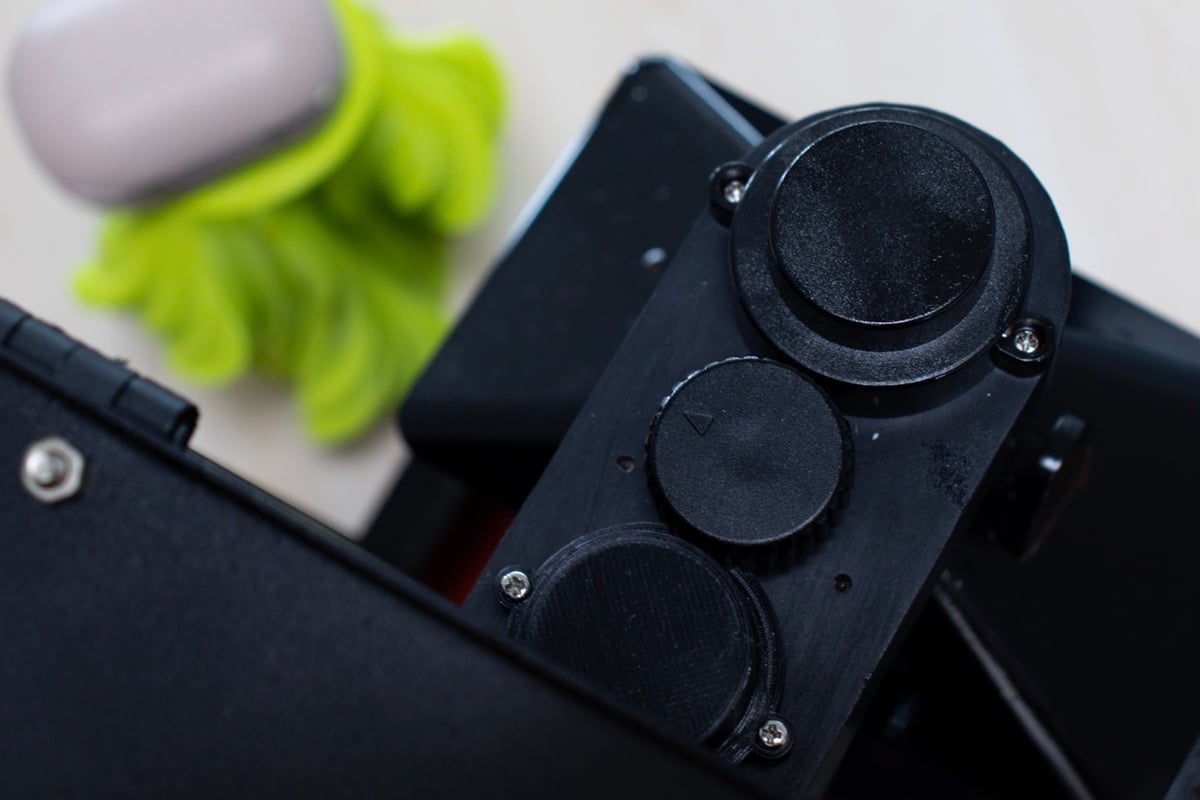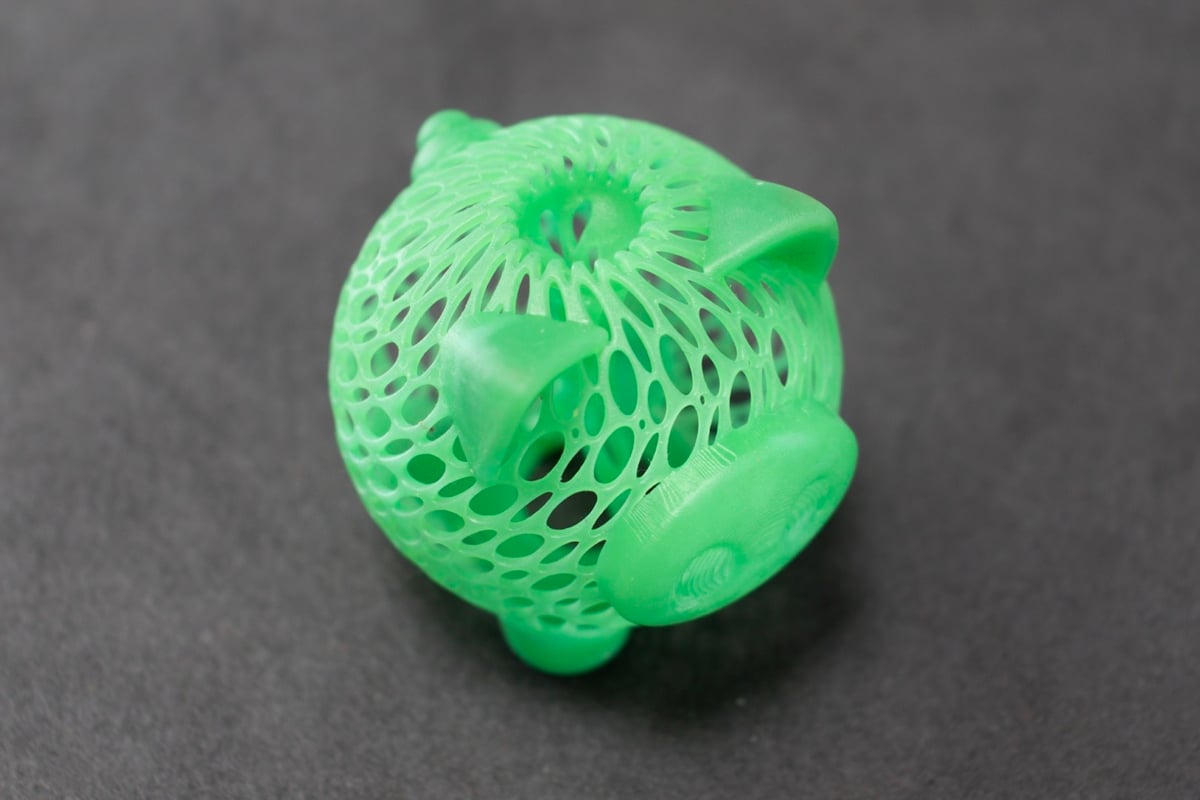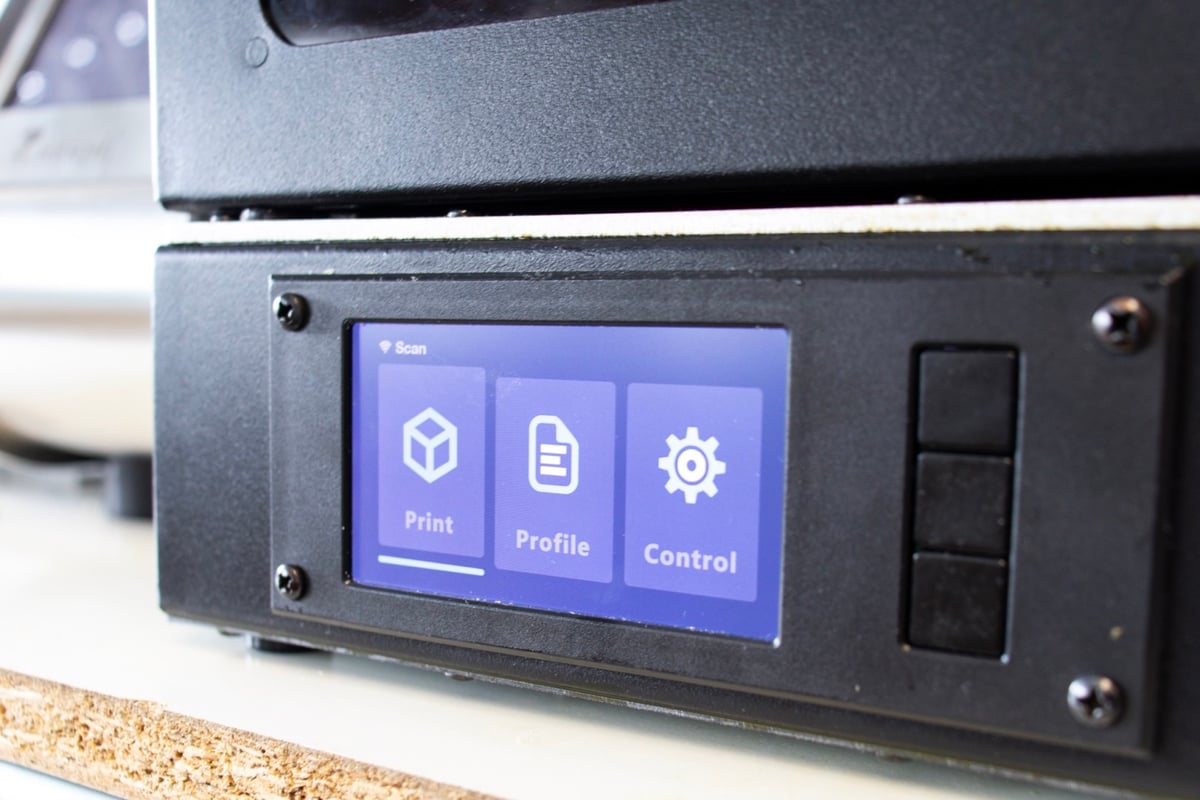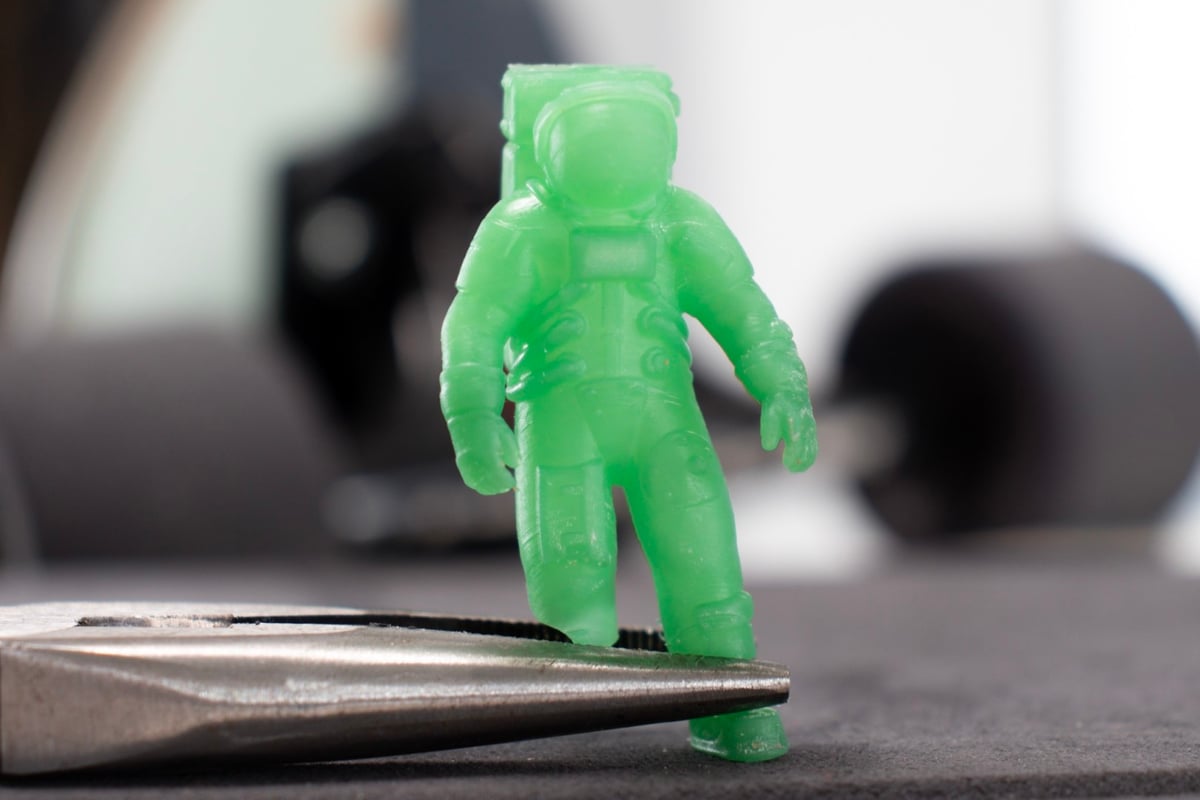It’s not often that we get to see a Kickstarter 3D printer ahead of launch, but fortune smiled favorably upon our team of tinker-torturers this time: California-based Beam3D enthusiastically sent us a working pre-production unit of their sub-$400 Prism resin printer, which just went live on Kickstarter.
On paper, the specs are great: 120 x 70 x 150 mm build volume, parallel LED array, 2K LCD screen, all-metal design, auto-leveling, resin calibration, multiple supported slicers, and (pauses for breath) all for a cozy $350, retail. Plus, if you’re daring enough, you can even pick one up for $250 if you back the campaign early enough. That sounds like a steal for a resin machine packing these specs, but you’ll probably want to some things we uncovered in our firsthand experience before pledging anything.

Getting Our Toes Wet (Not Literally, Because Resin is Toxic)
After loading resin into the vat, which was assembled and ready to go out of the box, we printed the test file loaded on the SD card provided with the Prism. Almost immediately we were greeted with live adjustment controls on the little LCD screen: base cure time, layer cure time, and movement distance (to peel away from the FEP film with every layer change).
Not once did we ever level the build platform, because the Prism comes with auto bed leveling. It was surprising the first time it happened – as the first ever print started, the middle knob on top of the platform arm spun a few turns, loosening the ball joint holding the platform level. This frees the platform from the ball joint, allowing it to level itself against the bottom of the resin vat, before tightening again, securing the now-leveled platform in place.

This auto-leveling works quite seamlessly, even in our early unit. After a few more prints, we discovered that the platform must be manually fixed in the tight position prior to level in order for it to succeed consistently. Even then, this is a welcome feature in the world of budget resin printers which, for the most part, still require manual fiddling with screws.
And speaking of new features, Beam3D claims the Prism includes automatic resin calibration in the form of a test file containing identical structures, each cured with different settings. This file wasn’t included on the micro SD card Beam3D provided with the pre-production Prism, so we couldn’t try this feature out just yet, but it should eliminate some manual back-and-forth work.

Emergence from the Viscous Abyss
The first ever test print on our pre-production Prism came out quite impressive – at a 50-micron layer height, the Prism output a beautiful, at least on this model, print. But what fun is a printer without some torturous prints? And so to start off strong, we threw boldmachines’ Squid Attack design at the Prism.
The result: a mix of both good, bad, and worse news. The good news was that the detail in the print, even when the model was tiny, proved Beam3D’s claim that their machine could hold out against much more expensive resin printers. The bad news was that the supports we generated in Autodesk Print Studio for the file were a little too clingy. And we’ve still got a vacancy for ‘Professional Support Remover’ at the office, so some tentacles were sacrificed in the process of removing all the support material.
The *worse* news: a leak in the resin vat.
Isn’t That Supposed to Be Dry?
In the process of cleaning the vat to swap resins, we noticed some had seeped below the FEP film, between the LCD screen and the bottom of the vat. We suspected a leak, but a few moments of holding the water-filled vat in the air showed no signs of a compromised film. Yet as we carried on with our prints, the leakage got worse.
We reached out to Beam3D for assistance with this issue, and they suspect a mechanical issue: if the hex nuts of the vat assembly are tightened incorrectly, leakage may occur. They suggested sending us the latest version of the Prism user manual so we can ensure the vat assembly is mechanically sound. While waiting on this response, we took the initiative to swap out the provided FEP film for a spare and continued printing.

In a Nutshell
As far as we could tell from our experiences with a pre-production Prism unit, the overall package it offers is promising. The company pitches the printer as a plug-and-play “easy and affordable” solution for novices, but it would appear that some experience is helpful when working with such a machine. Some troubleshooting and tinkering are necessary to harness the printer’s potential. With that said, all we received was simply a machine in a box — no manual or materials, so who knows how the final experience will unfold with the backer rewards and retail units when they ship.
If the Prism remains exactly as we have experienced it in the last two weeks, it might be better for the absolute beginner to invest in a higher-end and established resin system with a more refined, guided workflow to (almost) guarantee success.
With that said, using the machine as is it took little effort on our part to produce quality prints comparable to machines in and around the Prism’s price point. It’s quite likely that some of the issues we mentioned will be ironed out once the first units roll off the assembly line.
License: The text of "Beam3D Prism Kickstarter Preview: Hands-on Impressions" by All3DP is licensed under a Creative Commons Attribution 4.0 International License.